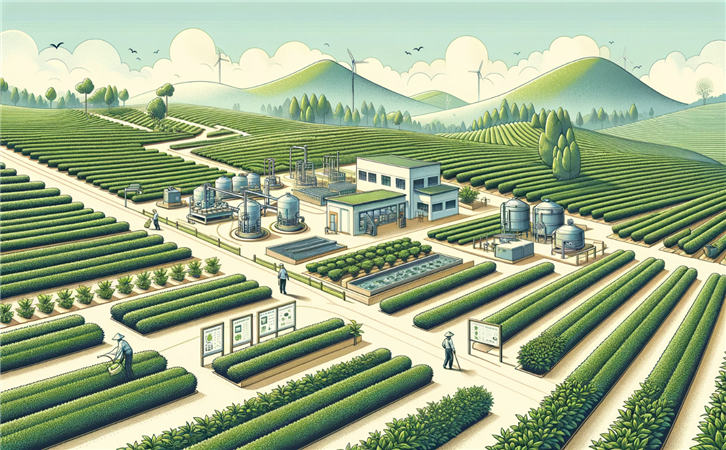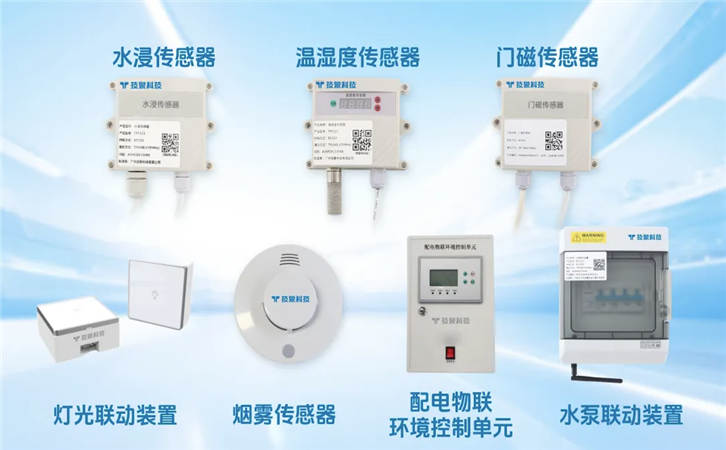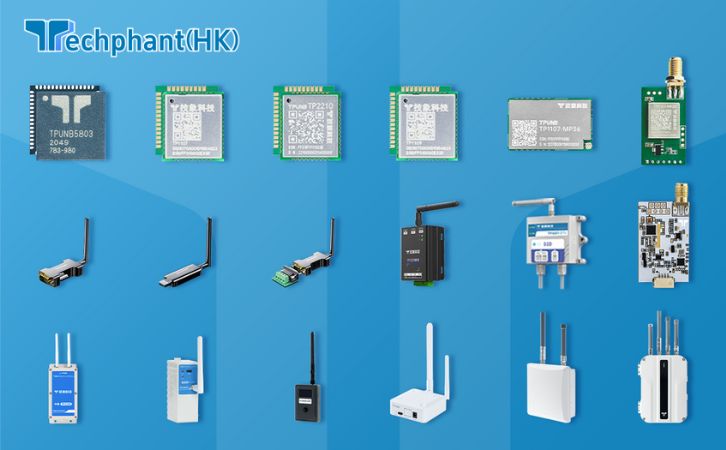The Internet of Things (IoT) has become a cornerstone of precision agriculture, enabling farmers to monitor crops, livestock, and environmental conditions in real time. A critical component of any IoT system is connectivity, which ensures that data from sensors and devices is transmitted reliably to cloud platforms or local servers for analysis. In agriculture, where farms are often located in remote or rural areas, selecting the right connectivity option is essential to ensure seamless data flow, energy efficiency, and cost-effectiveness. This article explores four key IoT connectivity options for agriculture—Wi-Fi, LoRaWAN, NB-IoT, and 5G—detailing their applications, benefits, and limitations.
I. Wi-Fi for Agricultural IoT Systems
Wi-Fi is a widely used connectivity option for IoT systems, known for its high data transfer rates and compatibility with a range of devices. In agriculture, Wi-Fi is commonly deployed in greenhouses, indoor farms, and small-scale operations where infrastructure is readily available.
- Applications: Wi-Fi is ideal for environments requiring high-bandwidth data transmission, such as real-time video feeds from agricultural drones or high-resolution soil and crop health sensors. For example, in a smart greenhouse, Wi-Fi connects temperature, humidity, and light sensors to a central control system, enabling automated climate adjustments. It also supports farm management software for real-time data visualization.
- Advantages: Wi-Fi offers high-speed data transfer (up to 1 Gbps with modern standards like Wi-Fi 6), making it suitable for data-intensive applications. It is cost-effective in areas with existing infrastructure, as most IoT devices are Wi-Fi-compatible, reducing the need for specialized hardware. Additionally, Wi-Fi networks are easy to set up and integrate with cloud platforms like AWS IoT or Microsoft Azure.
- Challenges: Wi-Fi has a limited range (typically 50–100 meters without extenders), which restricts its use in large, open fields. It also consumes significant power, making it less suitable for battery-powered sensors in remote areas. In rural settings, unreliable internet access can further limit Wi-Fi’s effectiveness, as it relies on broadband connectivity.
- Use Case: A dairy farm in a peri-urban area might use Wi-Fi to connect livestock health monitors and automated milking systems, transmitting data to a local server for analysis. However, extenders or repeaters may be needed to cover larger barns or pastures.
Wi-Fi is best suited for small to medium-sized farms with existing internet infrastructure, but its limitations in range and power efficiency often necessitate alternative connectivity options for large-scale or remote agricultural operations.
II. LoRaWAN for Long-Range, Low-Power Connectivity
LoRaWAN (Long Range Wide Area Network) is a low-power, wide-area network protocol designed for IoT applications requiring long-range communication and minimal energy consumption. It is particularly well-suited for agriculture due to its ability to operate in rural areas with limited infrastructure.
- Applications: LoRaWAN is used for soil moisture monitoring, weather stations, and livestock tracking across large farms. For instance, a LoRaWAN-enabled soil sensor can transmit moisture data over several kilometers to a gateway, which then forwards the data to a cloud platform for irrigation scheduling. It is also used in precision livestock farming to track animal locations using GPS-enabled collars.
- Advantages: LoRaWAN offers an impressive range of 2–15 km, depending on terrain and obstacles, making it ideal for expansive farmlands. Its low power consumption allows sensors to operate for years on a single battery, reducing maintenance costs. LoRaWAN also supports bidirectional communication, enabling remote control of devices like irrigation valves. The protocol operates in unlicensed spectrum bands (e.g., 868 MHz in Europe, 915 MHz in North America), avoiding costly licensing fees.
- Challenges: LoRaWAN’s data rate is low (0.3–50 kbps), limiting its use for high-bandwidth applications like video streaming. The setup requires gateways, which can be costly for small-scale farmers. Additionally, LoRaWAN’s performance can be affected by physical obstructions like hills or dense vegetation, requiring careful placement of gateways.
- Use Case: In a vineyard in rural Australia, LoRaWAN connects soil moisture and weather sensors across hundreds of hectares, enabling farmers to optimize irrigation and detect frost risks, with gateways strategically placed to ensure coverage.
LoRaWAN’s long-range and low-power features make it a go-to solution for large-scale, remote agricultural IoT deployments, though its low data rate restricts its use in data-intensive scenarios.
III. NB-IoT for Cellular-Based IoT Connectivity
Narrowband IoT (NB-IoT) is a cellular-based, low-power wide-area network (LPWAN) technology designed for IoT devices requiring reliable connectivity over long distances. Leveraging existing cellular infrastructure, NB-IoT is gaining traction in agriculture for its robustness and scalability.
- Applications: NB-IoT is used for remote monitoring of soil conditions, water levels in irrigation systems, and livestock health in areas with cellular coverage. For example, NB-IoT-enabled water level sensors in rice paddies can transmit data to farmers’ smartphones, enabling precise flood management. It is also used for smart metering in agricultural water systems, ensuring efficient resource use.
- Advantages: NB-IoT offers excellent coverage, penetrating obstacles like buildings or dense foliage, and supports connectivity in remote areas with cellular networks (e.g., 4G/LTE). It has low power consumption, with devices lasting up to 10 years on a single battery. NB-IoT also supports a high number of devices per cell, making it suitable for large IoT deployments. Its use of licensed spectrum ensures reliable, interference-free communication.
- Challenges: NB-IoT requires cellular network coverage, which may be limited in remote rural areas. The technology involves subscription costs for network access, increasing operational expenses. Its data rate (20–250 kbps) is higher than LoRaWAN but still insufficient for high-bandwidth applications. Deployment may also require coordination with mobile network operators, adding complexity.
- Use Case: In a large-scale wheat farm in India, NB-IoT connects soil nutrient sensors and weather stations, transmitting data to a cloud platform for predictive analytics, leveraging existing 4G networks to cover vast fields.
NB-IoT is a reliable choice for farms with access to cellular networks, offering a balance of range, power efficiency, and scalability, though its dependence on cellular infrastructure can be a limitation in underserved areas.
IV. 5G for High-Speed, Low-Latency Agricultural IoT
5G, the fifth-generation cellular network, is an emerging connectivity option for IoT in agriculture, offering ultra-high speeds, low latency, and massive device connectivity. While still in early adoption stages, 5G holds significant potential for transforming smart farming.
- Applications: 5G supports high-bandwidth applications like real-time video analytics from drones for crop health monitoring or autonomous tractors equipped with IoT sensors. For instance, 5G-enabled drones can stream high-definition imagery to detect pest infestations, with data processed in real time for immediate action. It also enables precision robotics for automated planting, harvesting, and weeding.
- Advantages: 5G offers data rates up to 10 Gbps and latency as low as 1 millisecond, enabling real-time control of IoT devices. It supports massive device density (up to 1 million devices per square kilometer), ideal for large farms with numerous sensors. 5G’s network slicing capability allows dedicated bandwidth for critical agricultural applications, ensuring reliability. Its enhanced coverage and penetration make it suitable for both urban and rural settings.
- Challenges: 5G infrastructure is still limited in rural areas, where most farms are located, and deployment costs are high. The technology requires significant investment in compatible IoT devices, which may be prohibitive for small-scale farmers. Energy consumption is also higher than LPWAN options like LoRaWAN or NB-IoT, impacting battery-powered devices. Regulatory and spectrum allocation issues may further delay 5G adoption in some regions.
- Use Case: In a high-tech farm in the Netherlands, 5G connects autonomous robots and IoT sensors for real-time crop monitoring and precision spraying, reducing pesticide use by 25% through targeted applications.
5G’s high-speed and low-latency capabilities make it a game-changer for data-intensive and time-sensitive agricultural applications, but its rollout in rural areas remains a key hurdle.
Conclusion
IoT connectivity options for agriculture—Wi-Fi, LoRaWAN, NB-IoT, and 5G—each offer unique strengths and challenges, catering to different farm sizes, locations, and applications. Wi-Fi is ideal for small-scale, high-bandwidth setups but lacks range for large fields. LoRaWAN excels in long-range, low-power scenarios, making it perfect for remote farms. NB-IoT provides reliable cellular-based connectivity with good penetration, though it depends on network availability. 5G promises transformative potential with high speeds and low latency but faces infrastructure and cost barriers. Choosing the right connectivity option depends on factors like farm size, budget, data requirements, and local infrastructure. As connectivity technologies evolve and become more accessible, they will further empower farmers to adopt IoT solutions, driving efficiency, sustainability, and productivity in agriculture.



